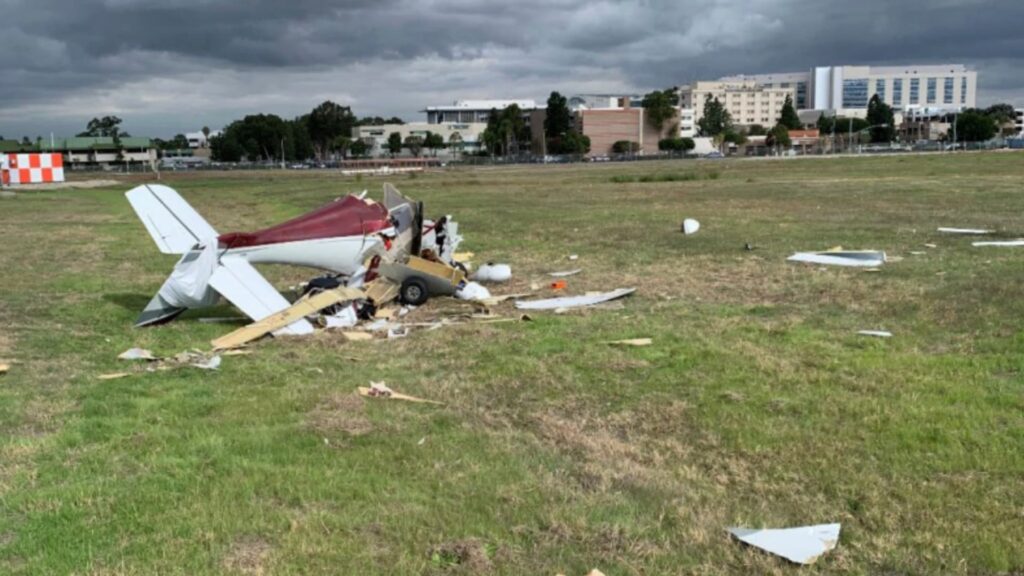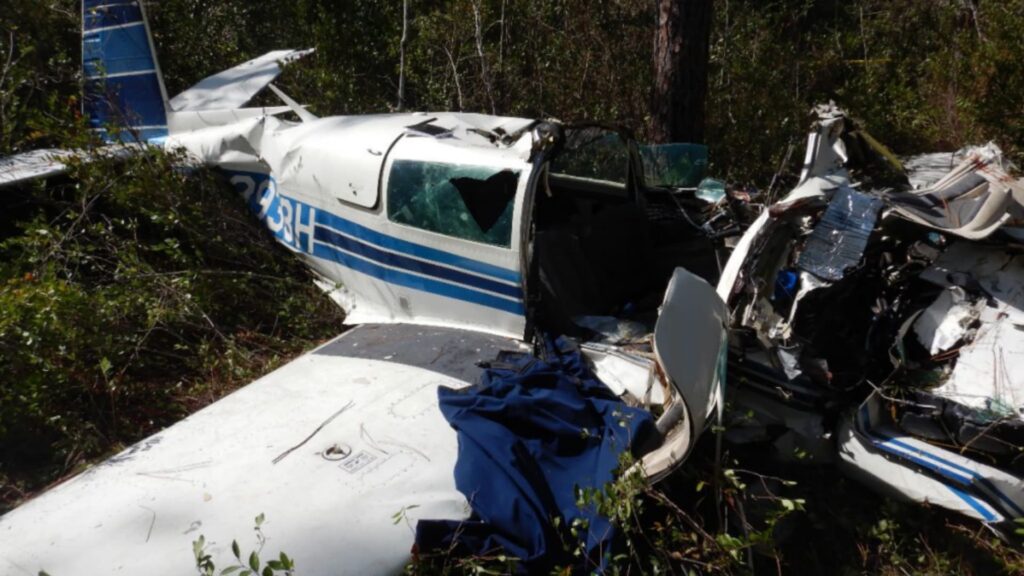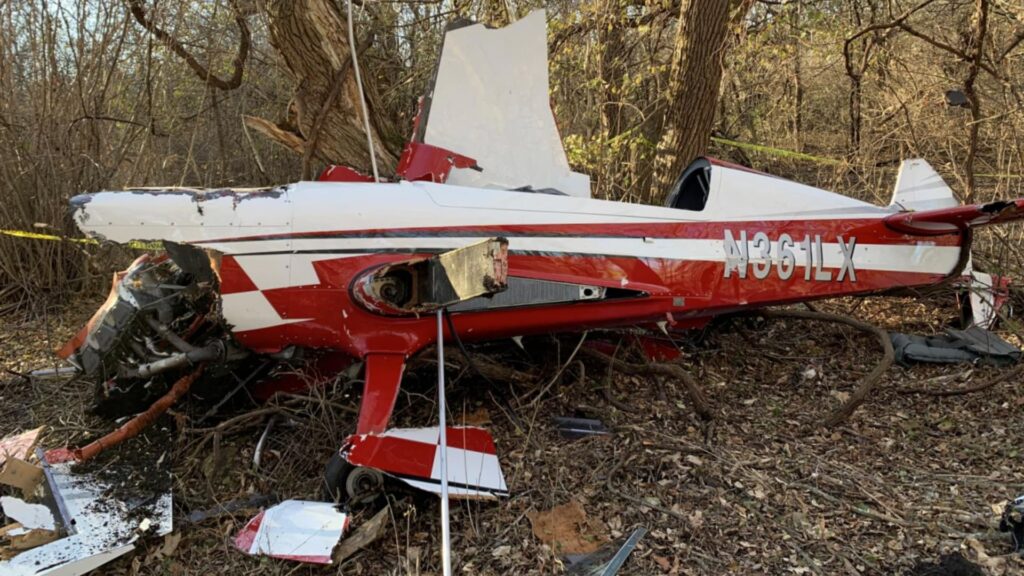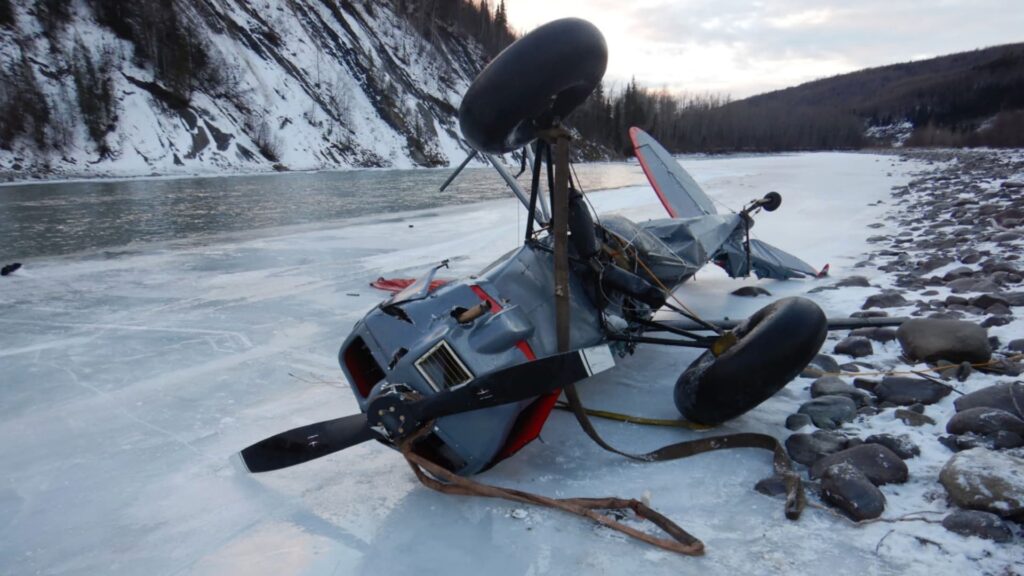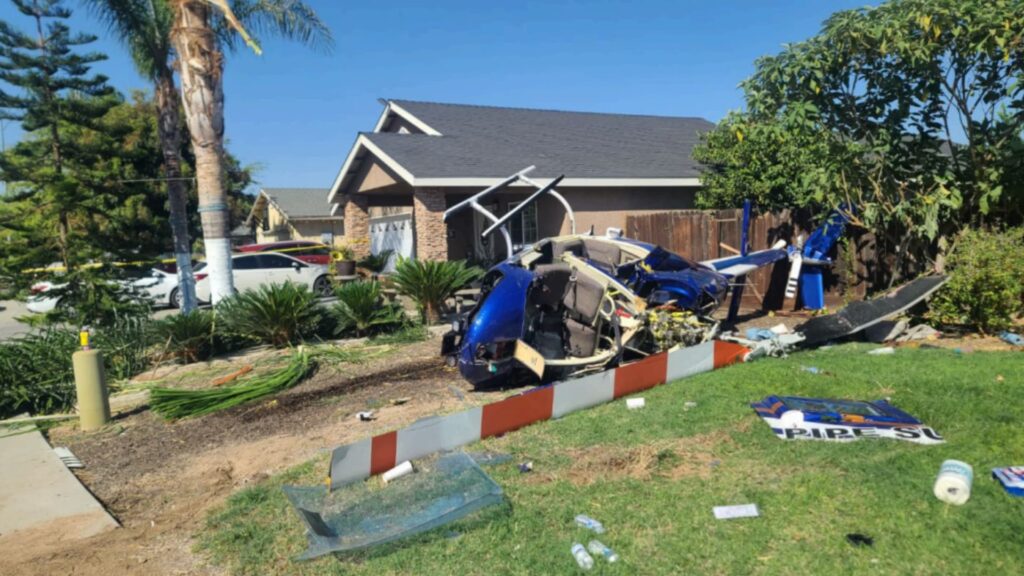This accident took place late morning at Torrance’s Zamperini Field (TOA) on November 30, 2022. Two pilots—both familiar with the airport—launched to do some pattern work in an amateur-built Lightning, registration N60MY. It was a routine local flight under Part 91, visual conditions, light winds, and an operating tower. ADS-B and tower audio later showed they worked several laps before the fourth circuit went sideways on short final to Runway 11R. The NTSB tagged the defining event as a loss of control in flight following a forward slip that rolled the airplane inverted at low altitude.
Who Was at the Controls
The left-seat pilot was an 81-year-old airline transport pilot with an estimated 19,335 hours total time. He owned the airplane and had held a BasicMed in recent years. The right-seat occupant was a 59-year-old private pilot and a partner in the airplane, with about 200 hours total time. Certificates and totals like that matter because experience shapes decisions in the pattern, for better and sometimes for worse. Hours in make and model were not documented in the report, and there were no instructor certificates listed for either pilot. The pair had been in good spirits the day prior, according to a friend, and the plan for that morning was simple: stay in the pattern and practice.
The Airplane and the Numbers That Matter
N60MY was a 2011 amateur-built Lightning, a sleek, two-seat, tricycle-gear experimental powered by a Jabiru 3300. The pilot’s operating handbook data cited in the report set expectations for approach and stall: flaps up stall 45 knots, full flaps stall 40 knots, and a “normal approach, flaps 25°” target of 52 KIAS. Those figures are important when we evaluate what unfolded on short final, where energy management leaves very little room for error.
The Pattern Looked Normal—Until It Didn’t
ADS-B showed the Lightning departed around 10:42 a.m. and flew several right traffic patterns to 11R. On the fourth circuit, the last data point captured it at roughly 200 feet MSL—just above the fence line at Torrance—with a heading of 129° and groundspeed about 69 knots. Around then, things got busy on the frequency. The controller had earlier misspoken and cleared the pilot for the option to 29R, but the pilot correctly read back 11R. As the fourth pattern developed, the tower cleared a touch and go to 11R; there was no readback and then a garbled, non-intelligible transmission. The controller briefly lost sight of the Lightning, asked another airplane to help locate it, and moments later a helicopter reported seeing the airplane go straight down. Witnesses on the ground said the airplane looked fast on short final—about 150 feet AGL—when it yawed left into a forward slip, then abruptly rolled inverted and plunged nose-down into the infield roughly 1,250 feet short of the 11R threshold. There was no fire. Both occupants were fatally injured.
Weather, Runway, and the Environment
Weather wasn’t the story here. It was day VMC: about 10 miles visibility, winds near 100° at 9 knots, broken around 2,000 feet, and dry pavement. No low-level wind shear or turbulence worth noting. TOA’s Runway 11R is 3,000 by 75 feet, right traffic, with a two-box VASI on the left producing a 4-degree glide path. In other words, the environment was benign and familiar for pattern work.
What the Wreckage Told Investigators
On-scene exam showed a compact impact with the nose down, debris contained to about 25 feet from the main wreckage, and no post-impact fire. Investigators found flight control continuity and no pre-impact engine or airframe anomalies. This is a classic hallmark of an aerodynamic loss of control rather than a systems failure. With the mechanical side cleared, attention turned to pilot technique and human factors.
Medical Findings and the Caution Around Them
Toxicology identified several substances. In the pilot, the lab found doxylamine (a sedating antihistamine), pregabalin (a “Do Not Fly” medication due to dizziness and somnolence risks), and two common, acceptable medications—atorvastatin and tamsulosin. The pilot’s medical history included coronary artery disease and diabetes; his BasicMed coursework and examination checklist were current within the prior two years. For the pilot-rated passenger, toxicology detected methamphetamine and amphetamine, along with acceptable medications for blood pressure and allergies. These findings raise eyebrows, but the NTSB was careful: there wasn’t enough evidence to say medical factors caused the loss of control. The probable cause focused on pilot technique—specifically, not maintaining control during a slip and failing to fly a stabilized approach—rather than a definitive medical impairment conclusion. That caution matters in how we learn from this event.
The Maneuver That Became the Trigger
Forward slips are legitimate tools. We use them to increase descent rate without picking up airspeed when we’re high or need to lose energy, especially in airplanes without speed brakes. But a slip near the ground is an energy-management exercise with sharp edges. Cross-controlled, high sink, and close to stall are not friends—especially if the airplane is already fast and low. In this case, witnesses described a fast approach, a slip, and then an abrupt roll to inverted. The NTSB assessed that the pilot’s control inputs were too aggressive during the slip, leading to a loss of control. Combine that with an unstabilized approach—airspeed and configuration not nailed inside the 1,000-foot mark—and you reduce your margin to almost zero. The Airplane Flying Handbook guidance the report quoted is simple: keep approach speed within +10/−5 knots of the recommended target. For this Lightning at flaps 25°, that target is 52 KIAS. Even allowing for the difference between indicated and groundspeed, the recorded 69-knot groundspeed at 200 feet hints at extra energy to manage, with not much runway left to work with.
Why the Inversion?
When a slip is overcooked—large rudder with opposite aileron at low speed—the wing with the higher angle of attack can reach critical AoA first. If the ball isn’t centered and the angle creeps up, you can get an uncoordinated stall that breaks sharply and rolls the airplane toward the skidding wing. Near the ground, there’s no altitude to recover. That description tracks with what witnesses and video showed: a quick roll to inverted and a nose-low impact. The wreckage told a similar story: nothing failed; the airplane simply ran out of lift and time.
Lessons I’d Take to the Pattern
First, guardrails around stabilization. Have a personal go-around gate—say, wings level by 500 feet AGL (1,000 in IMC), configured, and on speed: if not, go around. That sounds rote, but it’s a contract with yourself that prevents late, high-gain corrections. Second, be honest about slips near the ground. If you’re high, a gentle slip can help, but when speed, sink, and cross-control start stacking up, the safer option is a go-around. Third, brief your energy plan for short runways. The Lightning’s book speed is 52 KIAS on approach with flaps 25°. Build your pattern to arrive there without needing heroics in the last 15 seconds. Finally, crew coordination matters even in a two-pilot “practice” hop. Divide tasks, verbalize “on speed,” “stable,” or “going around,” and treat any non-intelligible radio call or confusion as just one more reason to reset with a climb and another circuit.
What the Board Concluded
The NTSB determined the probable cause was the pilot’s failure to maintain control while performing a slip on final, with a contributing factor of failing to fly a stabilized approach. The medical findings were noted but not tied causally to the accident. No pre-impact failures were discovered. In calm weather and a familiar pattern, a single maneuver pushed past the airplane’s envelope at the worst possible altitude. The ending underscores a simple truth: the go-around is free, and it buys you the two resources you can’t get back—altitude and time.
Key Takeaways
Set a stabilization gate and honor it. Use slips deliberately, not reactively. Nail book numbers early, especially in experimentals where handling can be crisp. And brief the go-around like it’s the most likely outcome on every approach, because some days it should be. This accident didn’t hide its lessons. They were in the numbers, the geometry of the slip, and the absence of mechanical issues. The Lightning did what aerodynamics said it would do; the job for the rest of us is to make sure we don’t set the same conditions in our own patterns.

